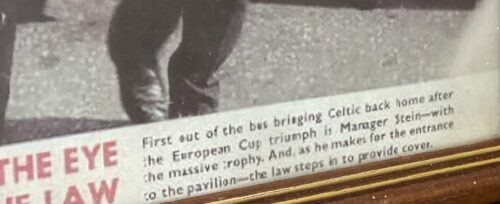I
30cm x 30cm Limerick
Roy Maurice Keane (born 10 August 1971) is an Irish
football manager and former professional player. He is the joint most successful Irish footballer of all time, having won 19 major trophies in his club career, 17 of which came during his time at English club
Manchester United.
He served as the assistant manager of the
Republic of Ireland national teamfrom 2013 until 2018.
Regarded as one of the best
midfielders of his generation, he was named by
Pelé in the
FIFA 100 list of the world's greatest living players in 2004.
Noted for his hardened and brash demeanour, he was ranked at No. 11 on
The Times' list of the 50 "hardest" footballers in history in 2007. Keane was inducted into the
Premier League Hall of Fame in 2021.
In his 18-year playing career, Keane played for
Cobh Ramblers,
Nottingham Forest, and Manchester United, before ending his career at
Celtic. He was a dominating
box-to-box midfielder, noted for his aggressive and highly competitive style of play, an attitude that helped him excel as
captain of Manchester United from 1997 until his departure in 2005. Keane helped United achieve a sustained period of success during his 12 years at the club. He then signed for Celtic, where he
won a domestic double before he retired as a player in 2006.
Keane played at the international level for the
Republic of Ireland over 14 years, most of which he spent as captain. At the
1994 FIFA World Cup, he played in every Republic of Ireland game. He was sent home from the
2002 FIFA World Cup after a
dispute with national coach
Mick McCarthy over the team's training facilities.
Keane was appointed manager of
Sunderland shortly after his retirement as a player and took the club from 23rd position in the
Football League Championship, in late August, to win the division title and gain promotion to the
Premier League.
He resigned in December 2008,
and from April 2009 to January 2011, he was manager of Championship club
Ipswich Town.
In November 2013, he was appointed
assistant manager of the Republic of Ireland national team by manager
Martin O'Neill. Keane has also worked as a studio analyst for British channels
ITV's and
Sky Sportsfootball coverage.












